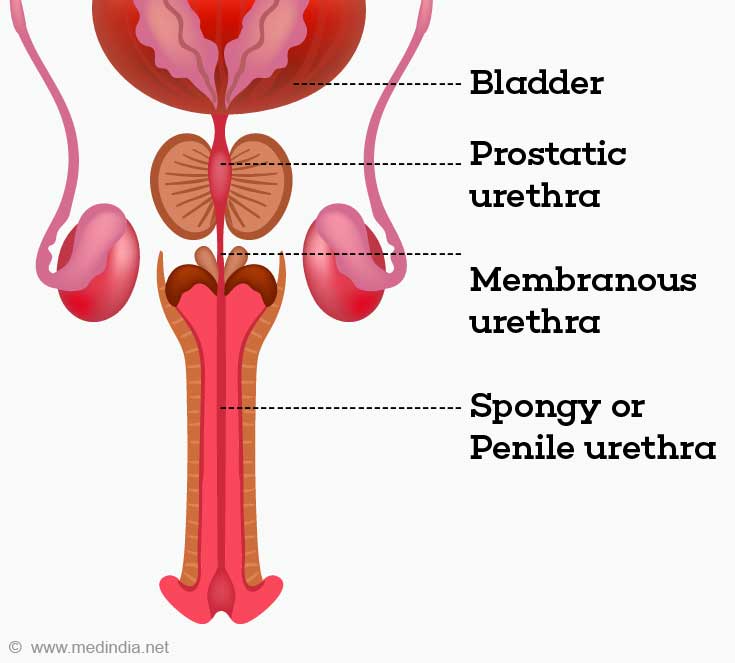About
The male urethra consists of three main parts – the prostatic urethra, the membranous urethra and the spongy or penile urethra.
The urethra is the tubular part of the urinary system that carries the urine from the urinary bladder to the exterior of the body. It is made up of fibrous tissue and muscle, and is lined by mucus membrane.

The urinary system functions to remove waste material from the body. It consists of the kidneys which filter the blood of urea, creatinine and other waste products of metabolism; the ureters which are tubes that carry the urine from the kidneys to the urinary bladder; the urinary bladder that stores the urine temporarily; and the urethra, which excretes the urine to the exterior.
The urethra in males and females differ from each other especially in terms of length. While the female urethra is short, the male urethra is around 20 cm long and passes through the length of the penis. Urine infection is more common in females due to the proximity of the urethral opening to the anus.
Besides urine, the urethra also carries semen during ejaculation in males. Thus, in males, the urethra is a part of the urinary system as well as the reproductive system.
Parts of the Male Urethra
The male urethra can be divided into:
Prostatic urethra: The prostatic urethra is that part of the urethra that passes through the prostate. Features of the prostatic urethra are listed below:
- The prostatic urethra is around 2.5 cm long and extends from the base of the bladder or bladder neck to the membranous urethra. The initial part, which passes through the bladder musculature, is sometimes referred to as the pre-prostatic urethra.
- The prostatic urethra is surrounded by the internal urethral sphincter near its middle part; it is widest in the middle.
- The posterior part of the urethra has an elevation called the urethral crest; the prostatic sinuses open up on either side of this crest, which bring prostatic fluid into the urethral lumen.
- The ejaculatory ducts also open up in the prostatic urethra, which carry the sperms from the testes and the fluid from the seminal vesicles into the urethra.
- Obstruction to the outflow of urine commonly occurs here in patients with benign hypertrophy of the prostate.
Membranous urethra: The membranous urethra is the shortest part of the urethra that connects the prostatic to the spongy urethra. Features of membranous urethra include:
- The membranous urethra is 1 to 2 cm long and extends from the tip of the prostate to the bulb of the penis located at its upper end.
- It is surrounded by the external urethral sphincter and the perineal membrane, which fix it rigidly to the pelvic bones, thereby making this part easily susceptible to injury during fracture of the pelvic bones.
- The external urethral sphincter plays an important role in voluntary control of urinary flow.
Spongy or penile urethra: The spongy urethra is the last part of the urethra that carries urine outside the body. Features of spongy urethra are:
- The spongy urethra is the longest part of the urethra located in the undersurface of the penis and is around 15 cm long.
- It is divided into two main parts, the pendulous urethra and the bulbar urethra. The pendulous urethra runs along the length of the penis, while the bulbar urethra is located in the bulb of the penis.
- The spongy urethra opens to the outside through the urethral meatus, which is a vertical slit-like opening slightly behind the tip of the penis.
- The bulbourethral glands and the glands of Littre open into the spongy urethra.
 MEDINDIA
MEDINDIA
 Email
Email






